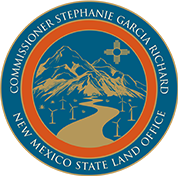By Megan Gleason, Albuquerque Journal
As uranium mining ramps up near the Grand Canyon, New Mexico remains steadfast in its commitment not to sign off on uranium mining leases and instead seeks to clean up the toxic legacy left behind here.
The New Mexico Environment Department plans this year to start on a uranium cleanup implementation plan, which includes drafting cleanup policies and procedures as well as assessing what sites in New Mexico are high risk.
There’s no formal statewide ban on uranium mining in New Mexico, but public lands Commissioner Stephanie Garcia Richard won’t issue uranium mining leases.
“I decided early on in my administration that the State Land Office would not issue any leases for uranium mining, and that still stands,” Garcia Richard told the Journal via email. “The potential risk for harm to New Mexicans and our natural resources is just too great to even consider it.”
New Mexico has some of the top uranium reserves in the nation. From 1948 to 1982, mines in New Mexico accounted for 40% of total U.S. uranium production , according to a 1983 New Mexico Geology report.
Decades later, communities are feeling the adverse health effects from the uranium mines. Uranium mining leaves behind radioactive waste, and radiation exposure can increase the risk of cancer, according to the U.S. Environmental Protection Agency.
Garcia Richard said downwinders, miners and tribal communities “have been suffering from the environmental and health hazards that come with uranium mining and nuclear testing for decades.” She referred to the Church Rock uranium mine spill in 1979, which was the largest radioactive spill in U.S. history.
“Uranium mining is dangerous and destructive, and it leaves behind a stain on the surrounding environment for decades to come,” Garcia Richard said.
There are 261 former uranium mine sites and eight former uranium mills across private, tribal, state and federal land in New Mexico, according to a dashboard from the New Mexico Environment Department and the New Mexico Energy, Minerals and Natural Resources Department.
Many of the former uranium sites in New Mexico are on tribal land. More than 50 mine sites are on Navajo reservation, allottee or trust land, according to the dashboard, and there are over a dozen mine sites on Laguna Pueblo and at least one on Zia Pueblo.
State Land Office spokesperson Joey Keefe said there are two active uranium mining leases on state trust land in western New Mexico. He said neither is producing and they were signed during the previous administration.
“While these leases remain in effect, we have no interest in expanding or entering into new leases when the industry hasn’t addressed the past contamination and destruction it has caused,” he said via email.
The new mine at Pinyon Plain Mine near the Grand Canyon in Arizona is within the boundaries of the Baaj Nwaavjo I’tah Kukv National Monument. The mine will cover 17 acres and operate for three to six years, according to the Associated Press, generating 2 million pounds of uranium.
It comes despite concerns expressed by tribal communities that the mines are harming them. The Havasupai Tribe and environmental advocates lost an appeal trying to prevent the new Arizona mine in 2022.
Cleanup
A bill passed in the 2022 New Mexico Legislature requires the New Mexico Environment Department to “coordinate efforts across the state to clean up and reclaim former uranium mine and mill sites.” It also created a revolving fund for the reclamation efforts.
In what the agency described as the first step in the process of cleaning up neglected uranium sites, the New Mexico Environment Department in January published an interactive and regularly updated dashboard showing former uranium sites.
Environment agency spokesperson Matthew Maez said the next step is drafting policies and procedures, which is built into an implementation plan for the uranium cleanup bill scheduled to begin before July.
He said the department will also begin site assessments to determine priority this year.
Maez said the state is also focused on having a local workforce ready for the cleanup. He said the New Mexico Environment Department is working with San Juan College to host a job training program.
Keefe, at the State Land Office, which collaborates on state cleanup efforts but doesn’t directly oversee them, said that, in general, there isn’t enough funding, resources or reasonable timelines for project completion to clean up major uranium sites.
There are hundreds of millions of dollars in uranium mine cleanup costs that are likely to fall on the public, he said.
“If companies are looking for a place to start their uranium operations, they can begin by cleaning up the legacy they left behind,” Garcia Richard said.
This article originally appeared in the Albuquerque Journal.
